ArrayList is an implementation class of List interface in Java It is used to store elements It is based on a dynamic array concept that grows accordinglyInstantiate And Initialize A Java Array We have already declared an array in the previous section But this is just a reference In order to use the abovedeclared array variable, you need to instantiate it and then provide values for it The array is instantiated using 'new' The general syntax of instantiating is as followsArrayList implements List and is hence legal Now, let's talk about why we prefer List list = new ArrayList () to ArrayList list = new ArrayList ();

Arraylist Trimtosize In Java With Example Geeksforgeeks
Java instantiate arraylist inline
Java instantiate arraylist inline- The JavautilList is a child interface of Collection It is an ordered collection of objects in which duplicate values can be stored Since List preserves the insertion order, it allows positional access and insertion of elements List Interface is implemented by ArrayList, LinkedList, Vector and Stack classesResizablearray implementation of the List interface Implements all optional list operations, and permits all elements, including null In addition to implementing the List interface, this class provides methods to manipulate the size of the array that is used internally to store the list



1
In Java language, if we want to copy an ArrayList, there can be two ways to do that Either do a deep copy or a shallow copy In the deep copy, a completely new object is created, and hence the variation in the old object's state will not reflect any change in the newly created instance810 Code Practice with ArrayLists ¶ Fix the following code so that it compiles The code should instantiate an ArrayList of Strings names and fill it with the Strings from the array friends It should then print out names In line 2, capitalize the l in Arraylist so that the proper library is importedAnswer ArrayList is a dynamic array It is a resizable collection of elements and implements the list interface ArrayList internally makes use of an array to store the elements Q #4) Do lists start at 0 or 1 in Java?
To create an array list in Java, you declare an ArrayList variable and call the ArrayList constructor to instantiate an ArrayList object and assign it to the variable ArrayList friends = new ArrayList (); ArrayList is a part of collection framework and is present in javautil package It provides us dynamic arrays in Java Though, it may be slower than standard arrays but can be helpful in programs where lots of manipulation in the array is needed ArrayList inherits AbstractList class and implements List interfaceThis is how you declare an ArrayList of Integer values
Hey Everyone, I want to instantiate an ArrayList in java I realize the method to doing this is ArrayList determiners = new ArrayList ();"instantiate empty arraylist java" Code Answer initialize arraylist java by SnoogySocks on Donate 6 Add a Grepper Answer Java answers related to "instantiate empty arraylist java" create an empty array in java;Q #3) What is an ArrayList in Java?




Java Arraylist How To Declare Initialize Print An Arraylist




Java67 How To Initialize Hashmap With Values In Java One Liner
Type is the type of data our array list will store arrayName is the name of the array list we are creating new ArrayList() tells our program to create an instance of ArrayList and assign it to the arrayName variable Once we've created an ArrayList, we can start to initialize it with values Initialize an ArrayList in JavaAt the beginning of the file In the constructor, we'll initialize these fieldsThe ArrayList class extends AbstractList and implements the List interface ArrayList supports dynamic arrays that can grow as needed Standard Java arrays are of a fixed length After arrays are created, they cannot grow or shrink, which means that you must know in advance how many elements an array will hold




Arraylist In Java Arraylist Methods Example Scientech Easy




Arraylist How Does The Size Increase Stack Overflow
Notice ArrayList uses Object as the element typeAs our generic type is not known until runtime, Object is used as the superclass of any type It's worth noting that nearly all the operations in ArrayList can use this generic array as they don't need to provide a strongly typed array to the outside world, except for one method – toArray!List = new ArrayList ();Notice the brackets that indicate a constructor We'll place the list into our class, along with the random generator Random In order to use an ArrayList, we have to add import javautilArrayList;




How To Implement Simple Circular Arraylist In Java Crunchify




Java Array Of Arraylist Arraylist Of Array Journaldev
To initialize an array in Java, we need to follow these five simple steps Choose the data type Declare the array Instantiate the array Initialize values Test the array In the narrow sense, initialization means that we specify (initialize) a * Implementation detail It's a private nested class inside javautilArrays, named ArrayList, which is a different class from javautilArrayList, even though their simple names are the same Static import You can make Java 8 ArraysasList even shorter with a static import import static javautilArraysasList; ArrayList aListNumbers = new ArrayList(10);
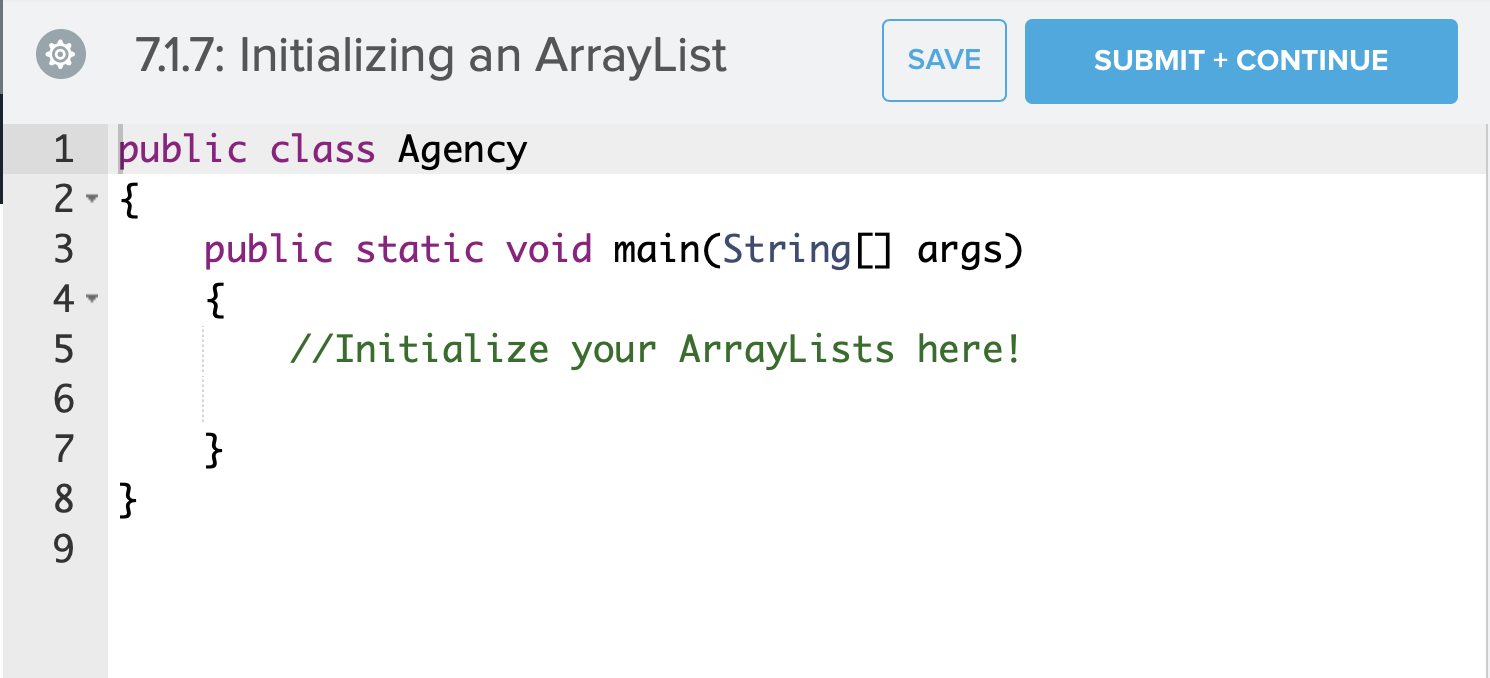



An Ad Agency Is Interested In Keeping Track Of Their Chegg Com
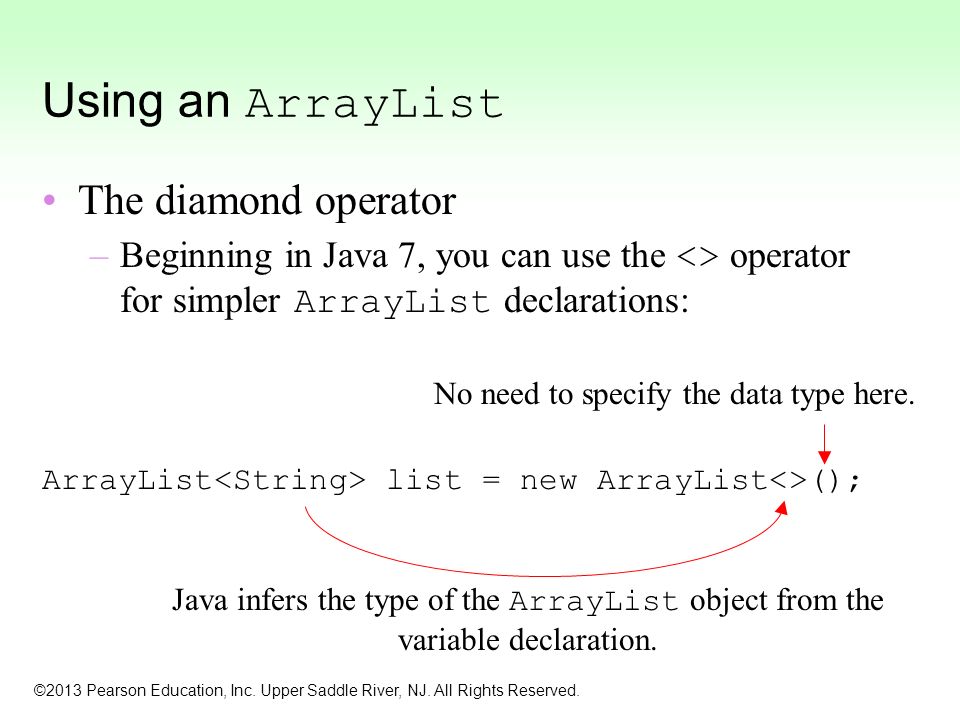



Chapter 7 Arrays And The Arraylist Class Ppt Video Online Download
Full quote, from Java in a Nutshell A parameterized type, such as ArrayList, is not instantiable we cannot create instances of them This is because is just a type parameter merely a placeholder for a genuine type Therefore, to convert a LinkedList to an array − Instantiate the LinkedList class Populate it using the add () method Invoke the toArray () method on the above created linked list and retrieve the object array Convert each and every element of the object array to string This tutorial illustrates how to easily create an unmodifiable List out of an existing ArrayList using either the core JDK, Google Guava or Apache Commons Collections The implementation of all these examples and code snippets can be found over on Github – this is a Mavenbased project, so it should be easy to import and run as it is
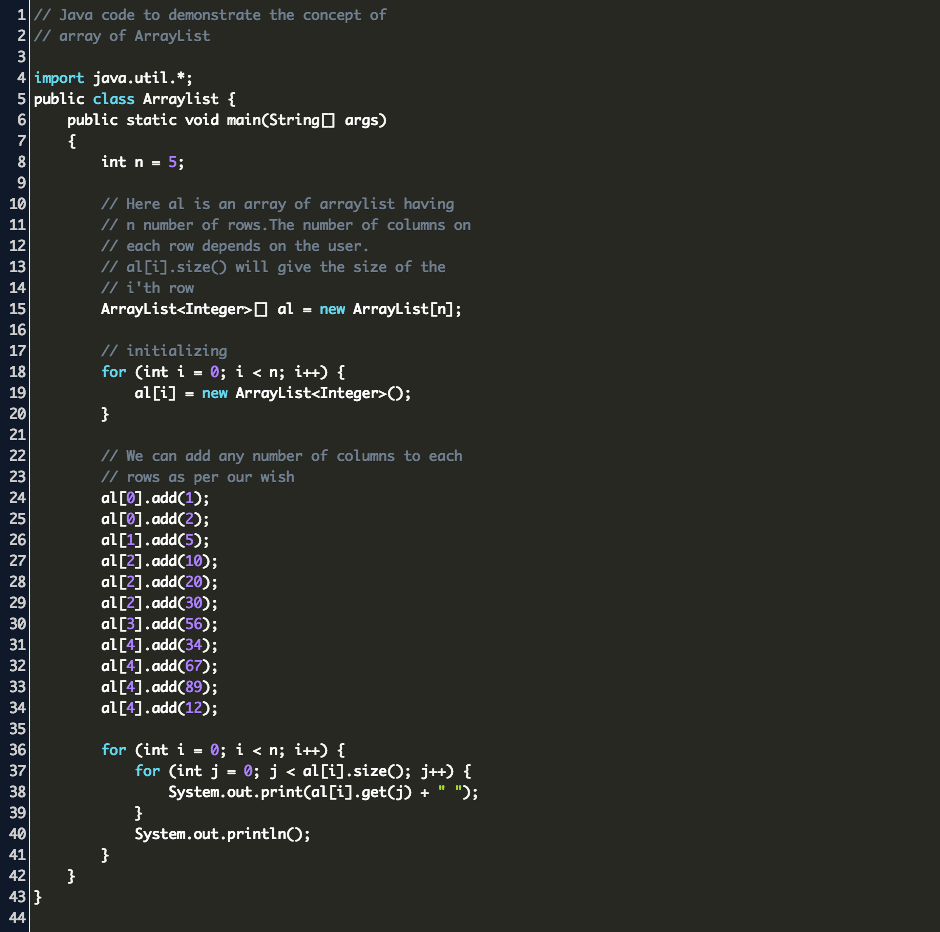



How To Create An Array Of Arraylist In Java Code Example




Display Arraylist Elements Using Iterator In Jsp Krazytech
How to Sort ArrayList in Java In Java, Collection is a framework that provides interfaces (Set, List, Queue, etc) and classes (ArrayList, LinkedList, etc) to store the group of objects These classes store data in an unordered manner Sometimes we need to arrange data in an ordered manner which is known as sortingThe sorting can be performed in two ways either in ascendingYou can't because List is an interface and it can not be instantiated with new List () You need to instantiate it with the class that implements the List interface} By defining it as ArrayList again inside the constructor, you're reducing the scope of tees in the constructor to the constructor only, while the other methods are using tees that is defined as a field at instance scope




Java Arraylist With Examples



1
Declaring ArrayList with values in Java Here is a code example to show you how to initialize ArrayList at the time of declaration ArrayList numbers = new ArrayList (Arrays asList (1, 2, 3, 4, 5, 6));This is because using an interface allows you to provide abstraction in your program as well as define a "contract"Java ArrayList Java ArrayList class uses a dynamic array for storing the elements It is like an array, but there is no size limit We can add or remove elements anytime So, it is much more flexible than the traditional array It is found in the javautil package It is like the Vector in C The ArrayList in Java can have the duplicate
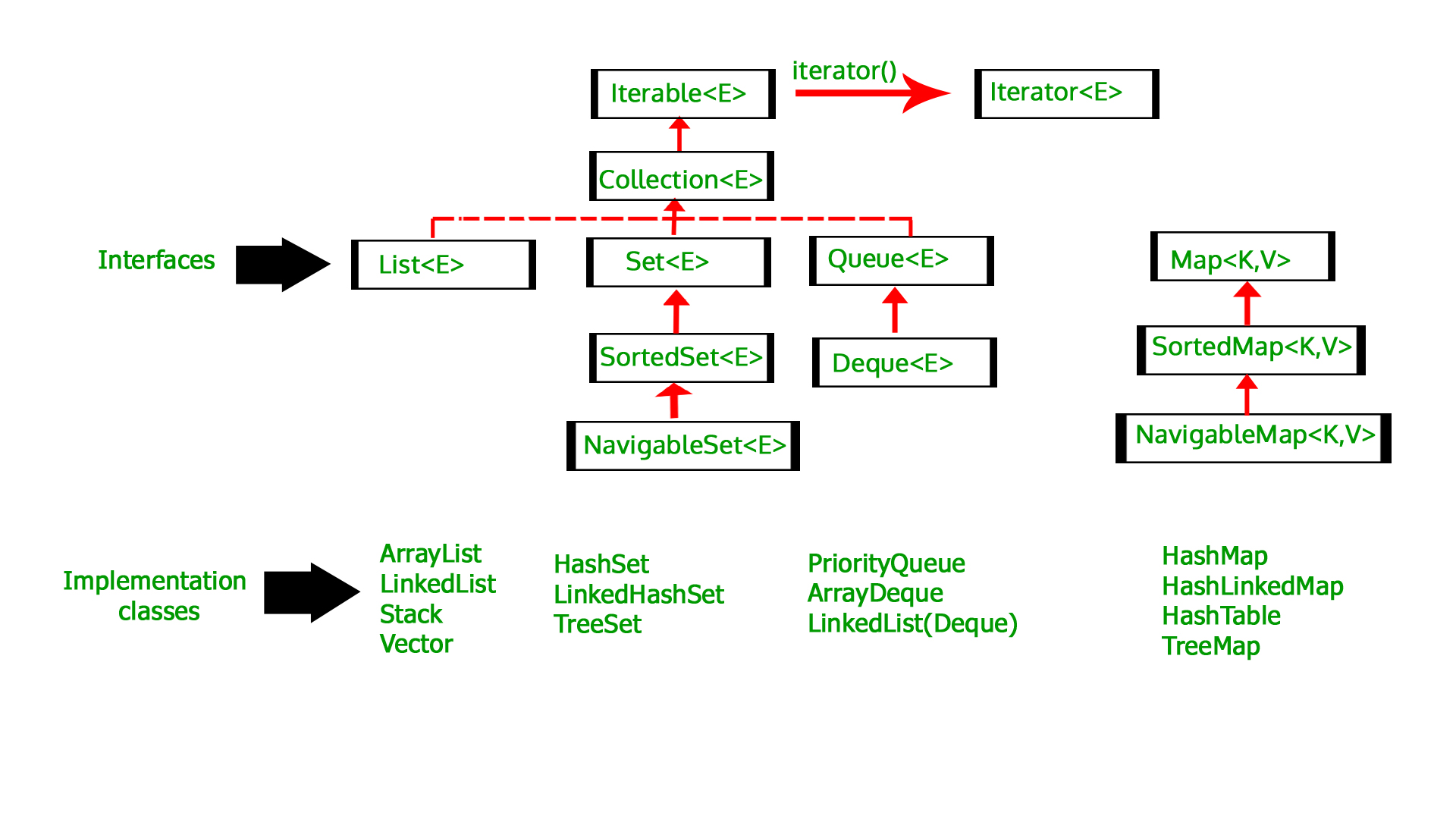



Initialize An Arraylist In Java Geeksforgeeks




Arraylist Learning C By Developing Games With Unity 5 X Second Edition
Listing 1 Instantiating an Object of ArrayList ArrayList rowList = new ArrayList ();Books stored in array list are Java Book1, Java Book2, Java Book3 Method 4 Use Collectionsncopies Collectionsncopies method can be used when we need to initialize the ArrayList with the same value for all of its elements Syntax count is number of elements and element is the item value The result instance of this code implements the List interface, but it isn't a javautilArrayList or a LinkedList Instead, it's a List backed by the original array, which has two implications that we'll look at in the rest of this section Although the class's name happens to be ArrayList, it's in the javautilArrays package




How To Prevent Your Java Collections From Wasting Memory Dzone Java



How To Use Arraylist In Java Quora
An ArrayList requires the javautilArrayList package to be imported before we can use it An ArrayList must be instantiated into an object and accepts its type as a generic argument between angle brackets We can add, retrieve, mutate and remove elements from the ArrayList with the appropriate methodsIn Listing 1, my ArrayList object has been instantiated by calling the default constructor In other words, I haven't passed a length into the constructorThe above code creates a new ArrayList object with an initial capacity of 10 Now you can use nCopies method of the Collections class to fill the ArrayList elements with zeros 1 public static List nCopies(int n, T o) This method returns a list containing the specified object




Best Way To Initialization Arraylist In One Line Java List Eyehunts




Java Array Of Arraylist Arraylist Of Array Journaldev
Java ArrayList class is a wellordered collection It keeps the insertion order of the elements In ArrayList, you cannot create an ArrayListThere are several ways using which you can print ArrayList in Java as given below 1) Using for loop You can print ArrayList using for loop in Java just like an array The add() method of the ArrayList class helps you to add elements to an array list It has two variants − add(E e) − This method accepts an object/elements as a parameter and adds the given element at the end of the list public void add(int index, E element) − This method accepts an element and an integer value representing the position at which we need to insert it and
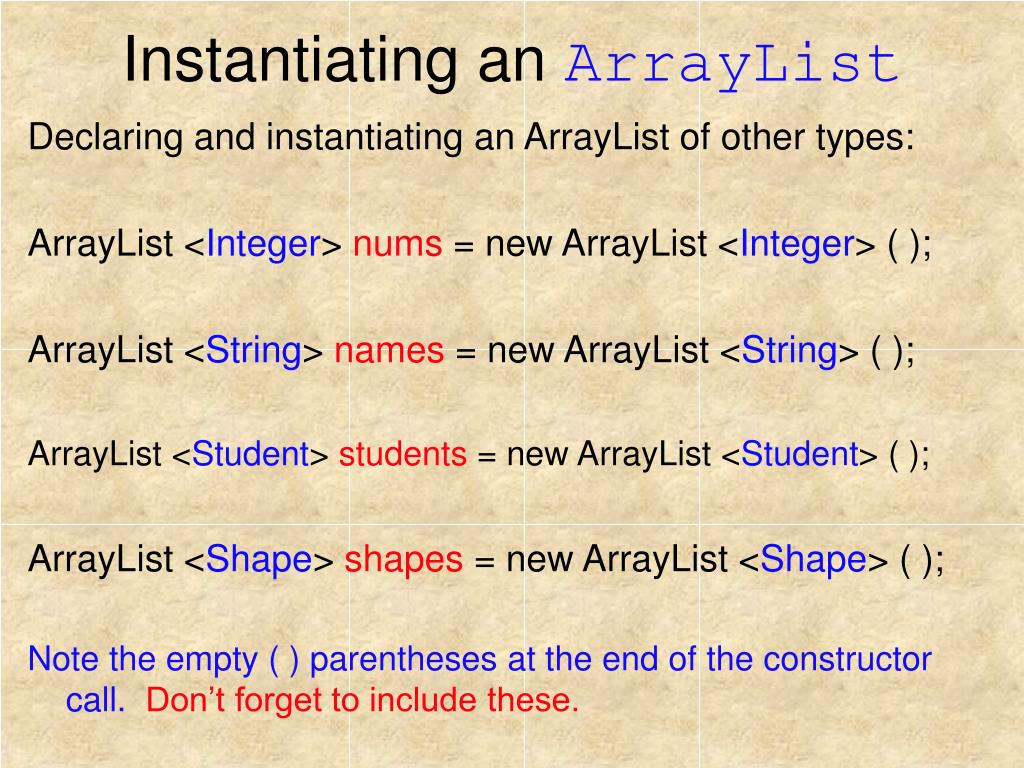



Ppt The Arraylist Data Structure Powerpoint Presentation Free Download Id



Tersus Get The Result Of A Java Arraylist
ArrayList is a part of collection framework and is present in javautil package It provides us with dynamic arrays in Java Though, it may be slower than standard arrays but can be helpful in programs where lots of manipulation in the array is needed This class is found in javaThat way you can change the actual implementation without having to change the member declaration ShareResizablearray implementation of the List interface Implements all optional list operations, and permits all elements, including null In addition to implementing the List interface, this class provides methods to manipulate the size of the array that is used internally to store the list




Java Arraylist How To Declare Initialize Print An Arraylist




Java67 How To Declare Arraylist With Values In Java Examples
} Should be public Course(){ tees = new ArrayList();Iterate through ArrayList with Java 8 stream Java program to iterate through an arraylist of objects with Java 8 stream API Create a stream of elements from arraylist object with streamforeach() method and get elements one by one ArrayList namesList = new ArrayList(ArraysasList( "alex", "brian", "charles") );Java ArrayList The ArrayList class is a resizable array, which can be found in the javautil package The difference between a builtin array and an ArrayList in Java, is that the size of an array cannot be modified (if you want to add or remove elements to/from an array, you have to create a




Read User Input Into An Array List Java Youtube




Javarevisited Top 16 Java Arraylist Tutorials And Examples For Beginners Best Of Lot
ArrayList numbers = new ArrayList(); Conversion of Array To ArrayList in Java 22, Nov 16 Array to ArrayList Conversion in Java 16, Aug 18 Convert an ArrayList of String to a String array in Java 02, Nov 18 Difference between length of Array and size of ArrayList in Java 05, Nov 18 ArrayList vs LinkedList in JavaThe code should instantiate an ArrayList of Strings names and fill it with the Strings from the array friends It should then print out names In line 10, change the terminating condition to i < friendslength so that you don't go out of bounds of the array This is the answer to the previous question Show Comments Fix the
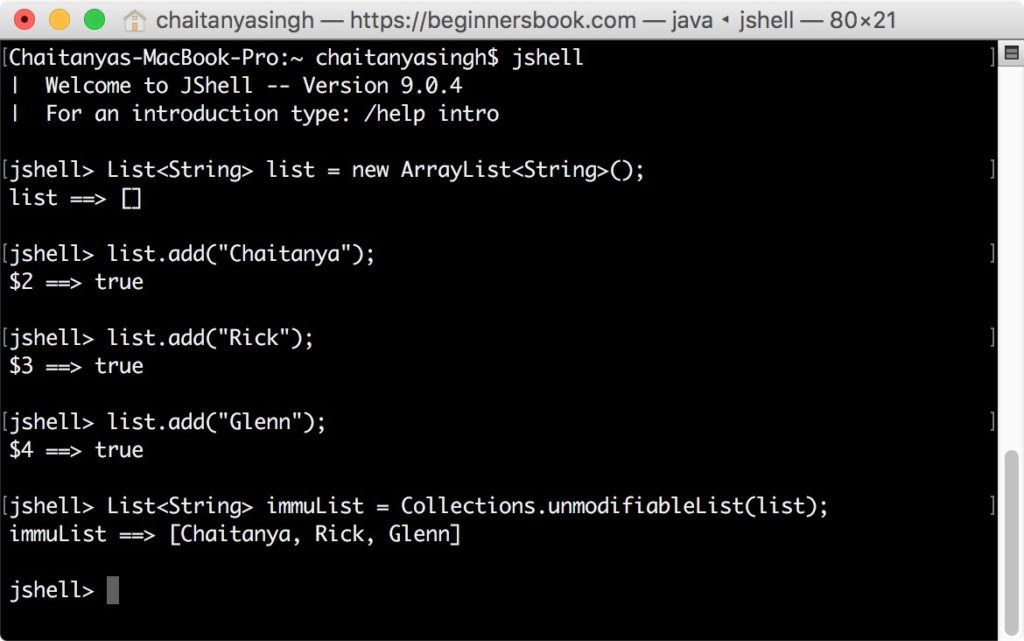



Java 9 Factory Method To Create Immutable List




Arraylist Java How To Use Arraylist Examples Java Code Geeks 21
Arraylist class implements List interface and it is based on an Array data structure It is widely used because of the functionality and flexibility it offers Most of the developers choose Arraylist over Array as it's a very good alternative of traditional java arrays ArrayList is a resizablearray implementation of the List interfaceYou can optionally specific a capacity in the ArrayList constructor ArrayList friends = new ArrayList (100); public Course(){ ArrayList tees = new ArrayList();




Javarevisited Top 16 Java Arraylist Tutorials And Examples For Beginners Best Of Lot




Create Arraylist String From Resource String Array Stack Overflow
The Java ArrayList can be initialized in number of ways depending on the requirement In this tutorial, we will learn to initialize ArrayList based on some frequently seen usecases Table of Contents 1 Initialize ArrayList in single line 2 The example also shows various ways to print the ArrayList using a loop, Arrays class, and Java 8 Stream How to print ArrayList in Java? In this post, we will see how to initialize List of String in java Can you initialize List of String as below Java 1 2 3 List list = new List();




Java67 How To Initialize Hashmap With Values In Java One Liner
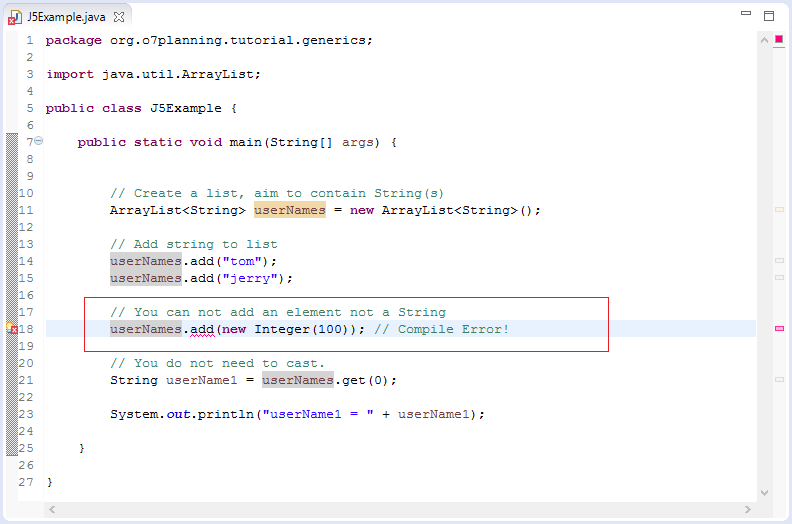



Java Generics
Answer Lists in Java have a zerobased integer index This means that the first elementJava ArrayList int, Integer ExamplesUse an ArrayList of Integer values to store int values An ArrayList cannot store ints dot net perls The ArrayList is used in many programs But in most places, it is used in a similar way we instantiate, add elements, and access data Part 1 We create an ArrayList—diamond inference syntax is on the2 One more addition better use javautilList and only use the specific ArrayList during the creation of the object public List list;




Custom Arraylist In Java Geeksforgeeks



1
The ArrayList class of Java stores elements by maintaining the insertion order The ArrayList allows duplicate elements stored in it ArrayList is not synchronized, the major point that differentiates the ArrayList from Vector class in Java ArrayList in Java is more identical to Vectors in CJava ArrayList add (int index, E element) method The add (int index, E element) method of Java ArrayList class inserts a specific element in a specific index of ArrayList It shifts the element of indicated index if exist and subsequent elements to the rightNote that the capacity is not



Q Tbn And9gcsc7tjbcgzp2oo Iynqjwqhx7oo7p9khwdvxt Jl4x4obkqpksr Usqp Cau
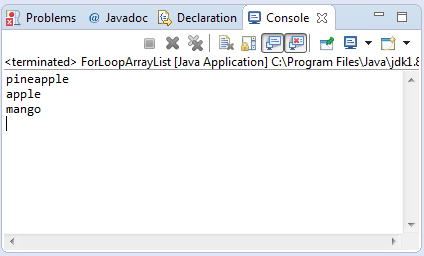



Java Loop Arraylist Example




February 18 Instanceofjava




Adding Value To List Initialize List Size Stack Overflow
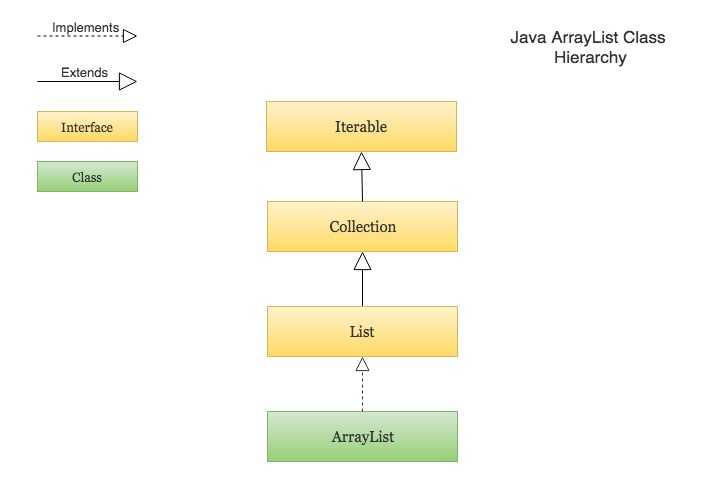



Java Arraylist Tutorial With Examples Callicoder




Java Difference Between Arraylist And Hashmap Changsiang Net




Arraylist In Java With Examples User Friendly Tech Help




Java Having Issues With Arraylists Stack Overflow




Arraylist In Java With Example Programs Collections Framework



Solved Purpose The Arraylist Class Is The Part Of Java Collection Framework This Class Implements The List Interface Provided By The Collection F Course Hero



Java Data Type Tutorial Java Variable Length Arrays
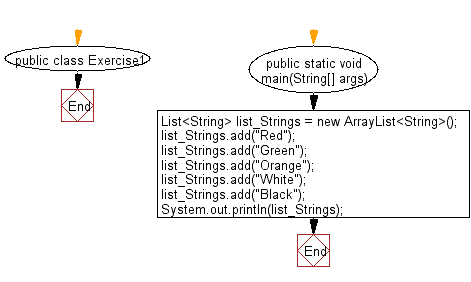



Java Collection Arraylist Exercises Create A New Array List Add Some Elements And Print Out The Collection W3resource




Java Arraylist Scanner Input Code Example




How To Initialize An Arraylist In Java




How To Implement Arraylist With Array In Java Journaldev




Arraylist In Java Javatpoint




Arraylist In Java Arraylist Methods Example Scientech Easy



1




List Items New Arraylist It Does Not Work Stack Overflow




How To Return Arraylist In Java Design Corral




February 18 Instanceofjava




How To Filter Distinct Elements From A Collection In Java 8 Webucator




Reading Text Files Using An Arraylist Youtube




Create A Record Of Students Using Arrays In Java




Arraylist In Java With Example Programs Collections Framework




Store User Input In Arraylist Java Code Example




Java Arraylist With Examples Howtodoinjava




Java Storing Objects In An Arraylist Youtube
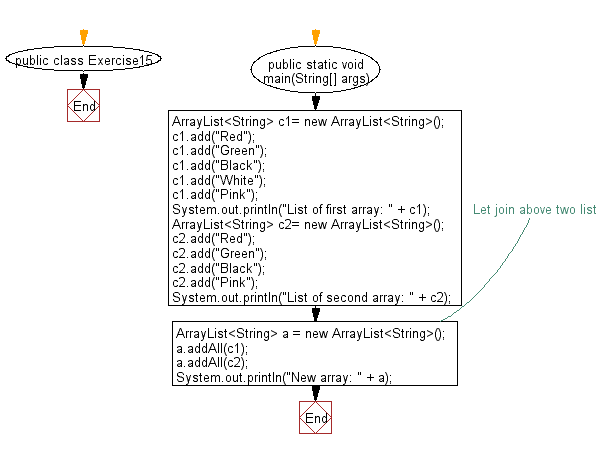



Java Collection Arraylist Exercises Join Two Array Lists W3resource




Java Week 8 Bizz Byte




How Arraylist Works Internally In Java Codenuclear




Benefits Of Arraylist In Java Over Arrays Instanceofjava




Java Char Arraylist Code Example




11 02 Declaring And Initializing An Arraylist Youtube




How To Create An Arraylist In Java Dzone Java



Www Cs Utexas Edu Scottm Cs312 Handouts Slides Topic33 Array Lists Pdf




Horstmann Chapter 7
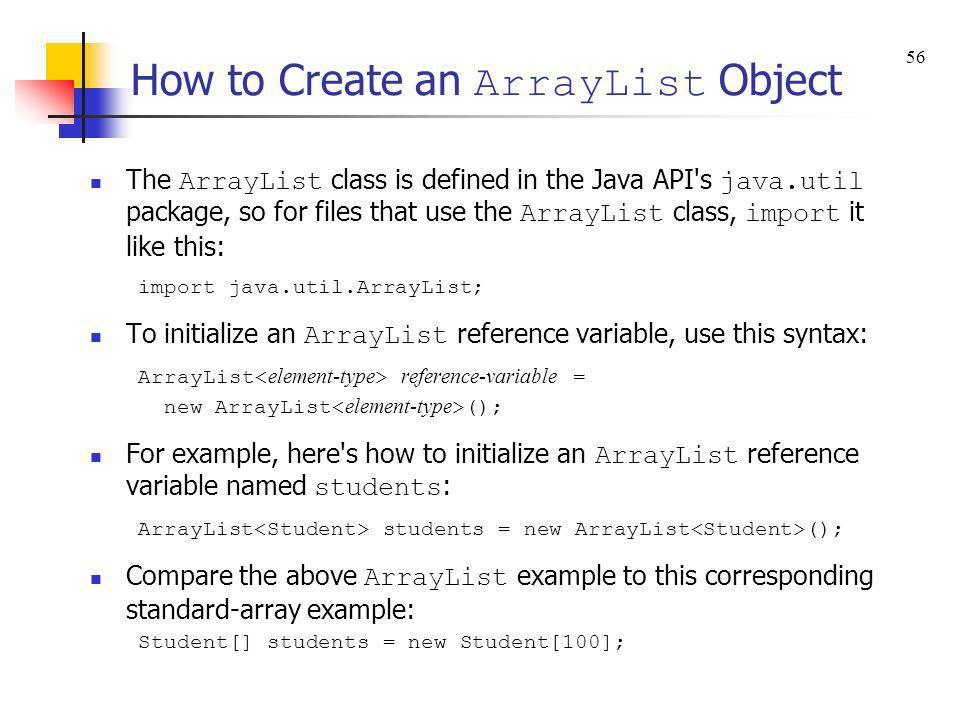



Chapter 10 Arrays And Arraylists Ppt Download




Csc 142 J Part 1 1 Csc 142 The Arraylist Class Reading Chapter 10 Ppt Download




Arraylist In C With Examples Hellgeeks




Gniitsolution How To Declare And Initialize A List Arraylist And Linkedlist With Values In Java Mkniit Blogspot In




Arraylist Trimtosize In Java With Example Geeksforgeeks




Javarevisited Top 16 Java Arraylist Tutorials And Examples For Beginners Best Of Lot



Canvas Bham Ac Uk Files Download Download Frd 1 Verifier Waskcl4zqvukmkl8n2t6t5lfgzzlkkmxsnoc0wqn




Javarevisited How To Declare And Initialize A List With Values In Java Arraylist Linkedlist Arrays Aslist Example




Top 10 Mistakes Java Developers Make
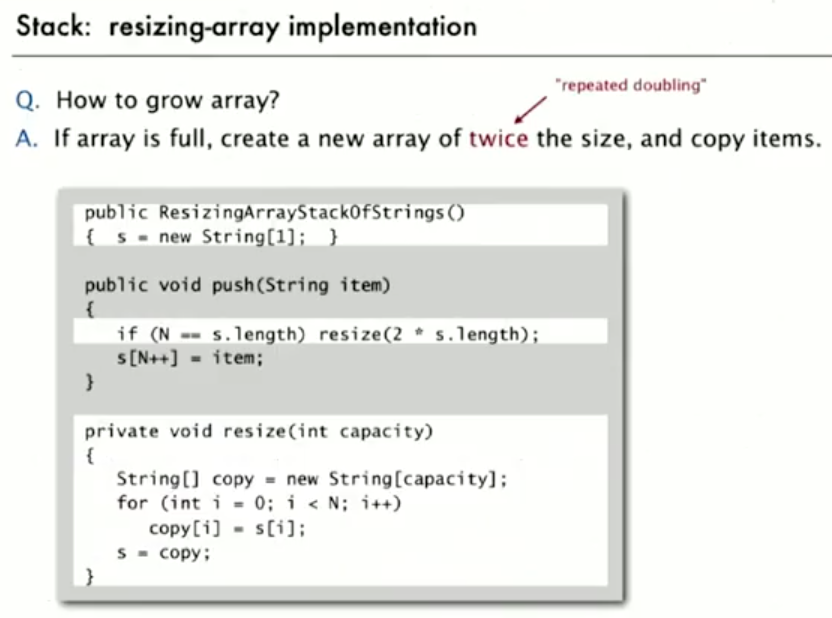



Data Structure Arraylist Efficiency By Emmanuel Abiola Medium




Arraylist And String And Object Stack Overflow
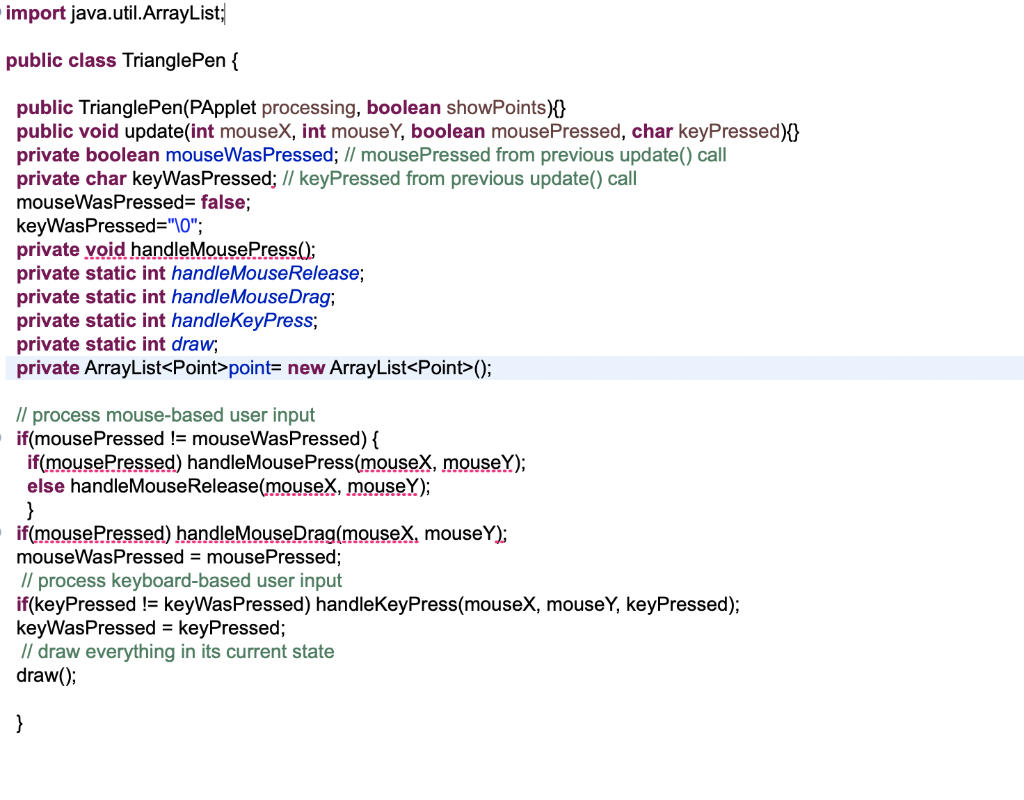



Add The Following Private Fields To Your Trianglepen Chegg Com




C Arraylist Tutorial With Examples




Conversion Of Array To Arraylist In Java Geeksforgeeks




Generics In Java




In Java How To Convert Arraylist To Jsonobject Crunchify
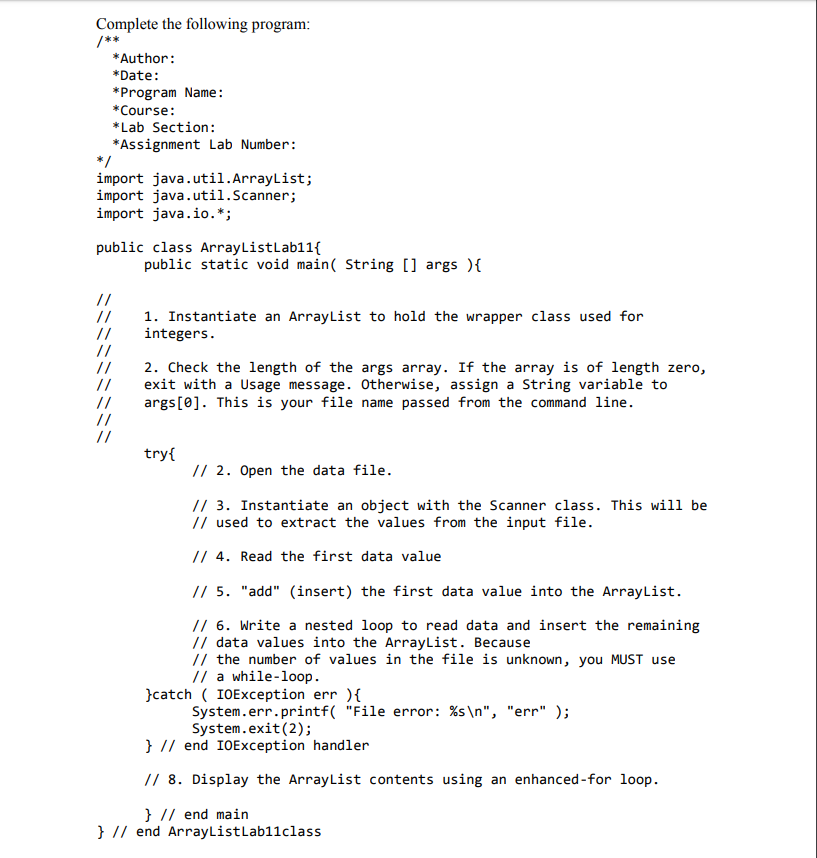



Java The Purpose Of This Assignment Is To Use A Chegg Com




How To Convert Hashmap To Arraylist In Java Crunchify
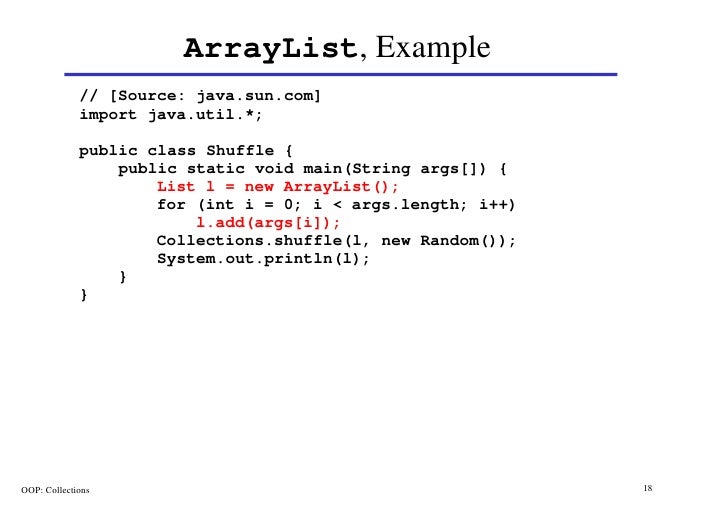



Collections In Java




Java Arraylist Example How To Use Arraylists In Java Udemy Blog




How Do I Create An Object Of An Arraylist Shape In Java Stack Overflow




Different Sorting Methods Of Java Arraylist Programmer Sought




Adding Value To List Initialize List Size Stack Overflow




Javarevisited How To Declare And Initialize A List With Values In Java Arraylist Linkedlist Arrays Aslist Example




Java Arraylist How To Declare Initialize Print An Arraylist



How Does One Implement A Binary Tree Using A Java Array List Quora




Java67 How To Initialize Hashmap With Values In Java One Liner




Java Arraylist How To Declare Initialize Print An Arraylist




Chapter 10 Arraylist S And An Introduction To The Java Collections Framework The Arraylist Class How To Create An Arraylist Object Adding Elements To Ppt Download
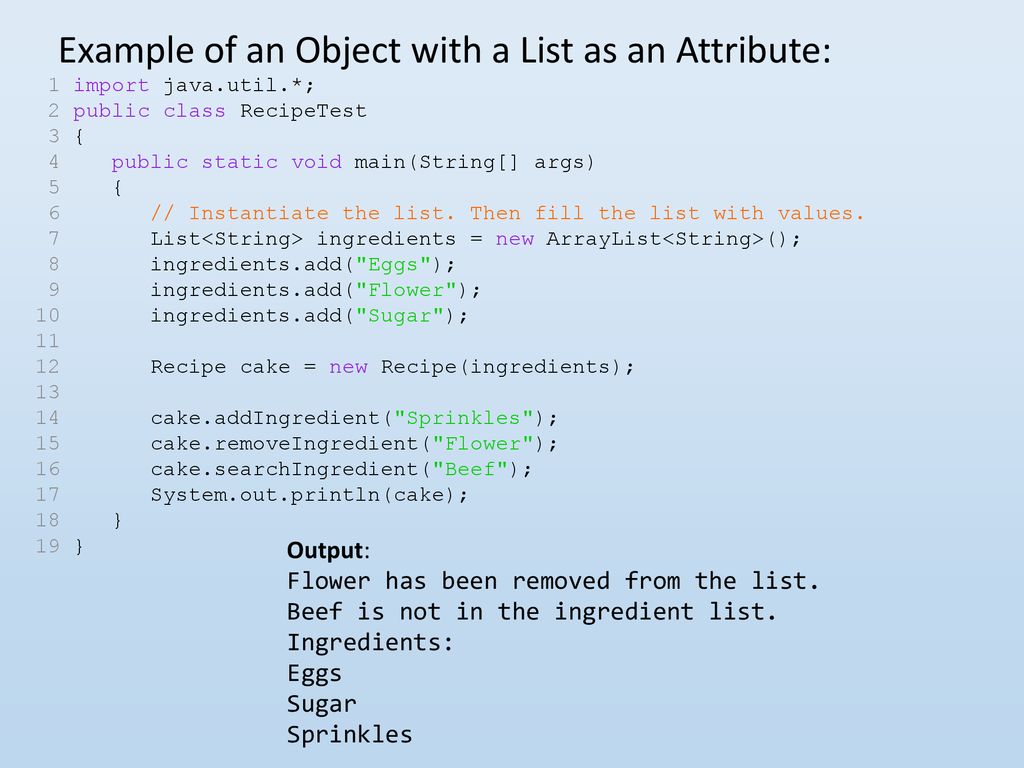



Objects With Arraylists As Attributes Ppt Download




Using Java Lists And Maps Collections Tutorial




Java High Scores With Oop Chegg Com




Data Structure Arraylist Data Structures By Emmanuel Abiola Medium
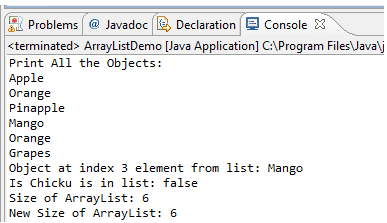



Java Arraylist And Vector W3resource




Java List And Arraylist List List New Arraylist Arraylist String Arraylist New Arraylist Programmer Sought



0 件のコメント:
コメントを投稿